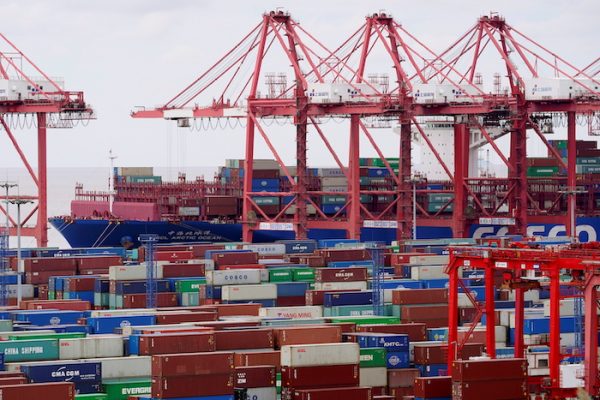In the lead up to the US Congress vote on Chinese membership in the World Trade Organization (WTO) in 2000, US President Clinton believed that China would be home to the largest potential market in the world with more than a billion consumers. He argued that only with good policy can the United States capitalise on its rise and be ‘able to export products without exporting jobs’.
Clinton’s claims never eventuated. China still isn’t a market with anywhere near one billion consumers. Even with a middle class numbering close to 400 million, it’s wishful thinking to call China’s 500 million or so subsistence farmers consumers, much less buyers of high-priced US goods. An overemphasis on Chinese purchasing power has created a distorted view of US business potential in China.
With the exceptions of agriculture, petroleum products and aerospace, the vast majority of US industry has never depended on exports. Over 90 per cent of what’s made in the United States is consumed in the United States. Exports to China are little more than a rounding error when compared to the overall size of the economy.
What can’t be overstated is that China is home to the world’s largest supply of low-cost factory labour. Weak Chinese demand for US products and high capacity to make them prompted the ‘invisible hand’ of economics — with a little help from Chinese subsidies and currency manipulation — to push work out of the United States into China. By 2018, it was no longer possible to hide the fact that trade with China was responsible for over 40,000 US factory closures and 3.8 million job losses.
The Trump administration has attempted to rebalance trade with China through a combination of US Treasury Department sanctions and Commerce Department tariffs. The result was a nearly 20 per cent drop in the US trade deficit with China from 2018 to 2019. But it has come at a cost. According to a 2019 survey of 1700 US small business owners, Chinese tariffs increased their costs by 37 per cent. And 46 per cent reported losing customers as a result of tariffs.
China will continue offering short term concessions while pursuing a number of programs aimed at reducing its dependence on US markets, including the Belt and Road Initiative, ‘Dual Circulation’, Made in China 2025, China Standards 2035, as well as the Regional Comprehensive Economic Partnership.
The United States doesn’t need a new trade deal with China. They need a completely different relationship. Legislating new relations is a likely non-starter for president-elect Joe Biden given the United States has a Republican Senate and some 400 anti-Chinese bills and resolutions in circulation.
Biden does have the ability to bring about change through the Office of Management and Budget (OMB). The OMB is responsible for implementing presidential policies and making sure all federal agencies fall in line. The new line with China needs to be ‘business is our policy’ and it needs to filter through all agencies, particularly the State Department, the Office of the US Trade Representative, the Economic Development Administration and the US Department of Commerce. The Biden administration can promote ‘business is our policy’ by reaching out to Chinese counterparts through the Bureau of Economic and Business Affairs and the Economic Development Administration working with China’s Ministry of Commerce to support business collaborations.
5G technology provides an opportunity for collaboration. 5G has the potential to create US$13.2 trillion dollars of global economic output and 22.3 million new jobs. Huawei holds most of the world’s 5G patents. Huawei’s largest chip supplier, Shanghai-based SMIC, lacks the ability to produce the 7 nanometre chips that 5G requires. US companies produce most of the world’s 5G chip making machines. US chip makers, Huawei and SMIC could work together to deploy 5G inside China, the United States, and along the Belt and Road, far quicker and cheaper than current 5G deployment.
The sticking point is national security. Huawei and SMIC are on the US Bureau of Industry and Security’s Entity List over alleged ties with the Chinese Communist Party and People’s Liberation Army.
The inconvenient truth is that each government has reasons not to trust the other, but their citizens stand to benefit much more from collaboration than conflict. ‘Business is our policy’ builds on the recognition that joint ventures between US and Chinese competitors have achieved commercial success. But time is not on Biden’s side. At a recent symposium, President Xi Jinping spoke of decoupling from the United States and reducing reliance on foreign manufacturers. The new US administration must act fast to repair business and innovation relations between the two nations.
Craig Seidelson is Assistant Professor of Operations and Supply Chain Management, University of Indianapolis.


Please be advised that SMIC is not listed on the Bureau of Industry and Security’s Entity List as it is stated in this article.
China’s biggest chip fab, SMIC, has been added to the US Commerce Department entity list. The Commerce Department ruled in late Sept. of 2020 that the possibility of SMIC supplying the Chinese military made it an “unacceptable risk” according to Reuters.